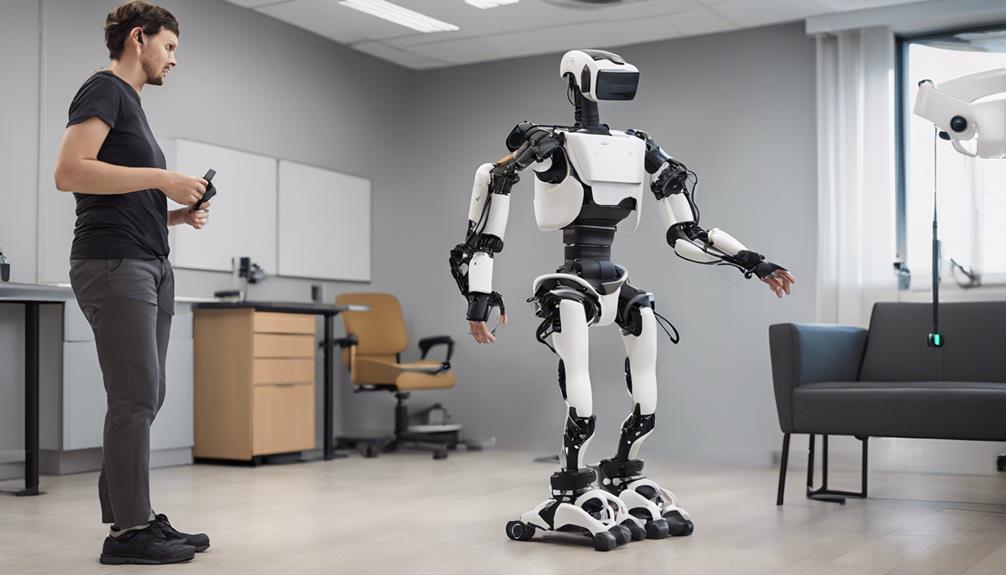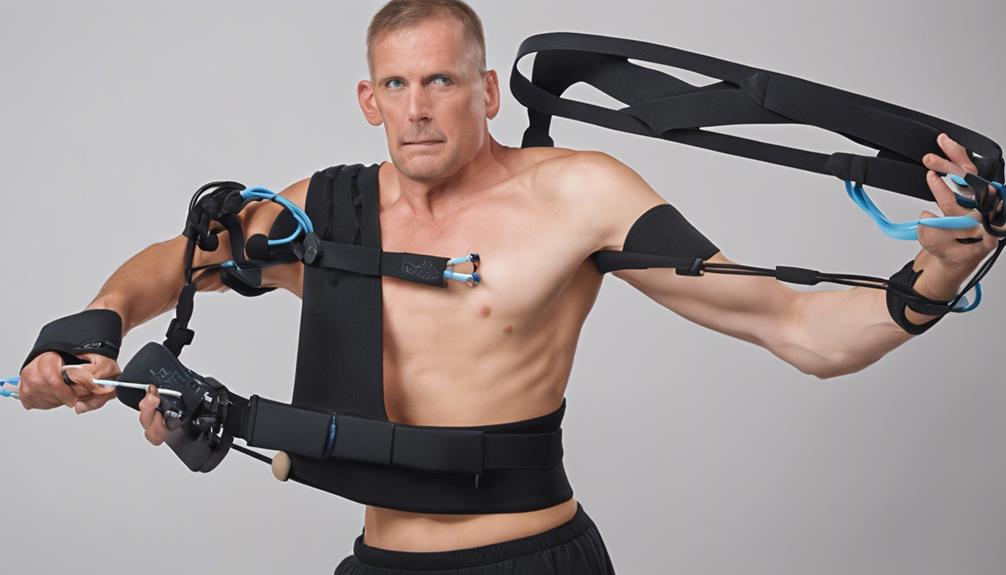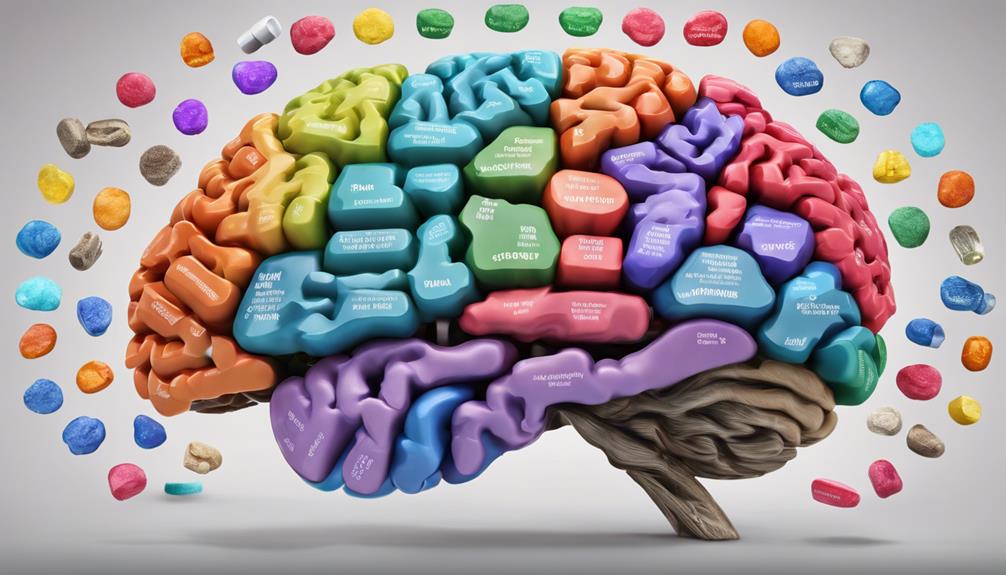In our exploration of tools for stroke recovery, we have come across a range of advanced techniques designed to assist individuals in reclaiming abilities that were lost.
From adaptive equipment for everyday tasks to advanced technology designed specifically for stroke rehabilitation, these tools offer a promising path towards recovery.
But what makes these tools truly effective in supporting individuals post-stroke? Let's delve deeper into the nuances of stroke recovery tools and uncover the key factors that contribute to their success.
Key Takeaways
- Adaptive equipment crucial for independence
- Advanced tech enhances neuroplasticity and fine motor skills
- Occupational therapy tools aid daily living tasks
- Tools for regaining arm function improve strength and coordination
Adaptive Equipment for One-Handed Tasks
Adaptive equipment for one-handed tasks plays a crucial role in facilitating independence and enhancing daily living activities for individuals with limited hand function, particularly stroke survivors. These tools are designed to help stroke survivors with tasks that might otherwise be challenging to perform with just one functional hand. By utilizing a range of adaptive equipment such as one-handed cutting boards, rocker knives, and adaptive fasteners, individuals can make life easier by independently engaging in daily activities like meal preparation and dressing.
Tools like button hooks, zipper pulls, and dressing sticks further increase independence in daily routines for stroke survivors. The use of adaptive equipment not not only assists with practical tasks but also promotes a sense of self-reliance and empowerment. It's through these aids that individuals recovering from strokes can regain confidence and improve their quality of life by successfully managing everyday activities that were once deemed difficult.
Advanced Technology for Stroke Recovery

Advanced technology plays a pivotal role in enhancing stroke recovery outcomes, leveraging robotics, brain-computer interfaces, and innovative therapies to promote neuroplasticity and improve functional abilities post-stroke. Utilizing these advanced tools can significantly impact stroke survivors' rehabilitation journey by targeting specific areas of improvement such as arm function, cognitive rehabilitation, and fine motor skills.
Here are five tools to promote stroke recovery:
- Robotic devices for arm rehabilitation enhance range of motion and muscle strength.
- Brain-computer interfaces facilitate cognitive rehabilitation through neurofeedback training.
- Virtual reality systems offer immersive environments to improve daily living activities and fine motor skills.
- Music therapy and metronomes aid in arm function recovery and motor learning.
- Smartphone apps provide auditory and visual cues for exercises, supporting stroke survivors in their rehabilitation.
These technologies, supported by research, have shown to positively impact stroke survivors' quality of life and independence in activities of daily living.
Occupational Therapy Tools for Independence
Occupational therapy tools play a crucial role in promoting independence and functional abilities for stroke survivors by addressing specific challenges in daily living tasks. Stroke survivors often face difficulties in activities of daily living due to physical and cognitive impairments.
Adaptive utensils are essential in aiding eating independence for individuals with hand weakness or coordination issues post-stroke. Hip kits equipped with adaptive tools assist with dressing tasks such as zipping, buttoning, and reaching for clothing items, enhancing autonomy in daily life.
Toilet aids like raised toilet seats, grab bars, and wiping aids are instrumental in promoting bathroom independence for stroke survivors. Additionally, adaptive fasteners like button hooks and zipper pulls facilitate clothing adjustments for those with limited dexterity.
Rocker knives and cutting boards with suction cups provide stability and support during food preparation tasks, aiding in the development of essential skills for autonomy in daily living. Occupational therapy tools are vital in supporting stroke survivors on their path to recovery and regaining independence.
Tools for Regaining Arm Function

Stroke survivors undergoing arm function rehabilitation benefit from utilizing specialized tools and therapies designed to enhance grip strength, joint stability, and overall mobility in the affected limbs. Occupational therapy plays a crucial role in aiding stroke survivors in regaining arm function. Here are five essential tools for arm function recovery:
- Hand therapy balls and finger splints improve grip strength and joint stability.
- Therapy putty and resistance bands aid in hand and finger exercises to enhance strength and mobility.
- Balance boards are effective for improving stability and coordination in the arms.
- The FitMi Home Therapy Program and MusicGlove Hand Therapy offer interactive exercises for hand mobility and strength.
- The CT Speech and Cognitive Therapy App assists in addressing speech and cognitive deficits, supporting overall arm function rehabilitation.
These tools, when used under the guidance of healthcare professionals, can significantly contribute to the recovery of arm function in stroke survivors.
Dysphagia Management After Stroke
Dysphagia, a common post-stroke complication, affects up to 65% of stroke survivors. Managing dysphagia in stroke survivors is crucial to prevent complications such as aspiration pneumonia and malnutrition. Speech therapy plays a significant role in improving swallowing function post-stroke. Treatment strategies commonly include implementing modified diets and thickened liquids tailored to the individual's needs. Swallowing exercises are frequently used to strengthen swallowing muscles and improve coordination. In severe cases of dysphagia, feeding tubes may be necessary to ensure adequate nutrition and hydration.
Effective dysphagia management after stroke requires a multidisciplinary approach involving speech therapists, dietitians, and healthcare providers. Regular monitoring and adjustments to the treatment plan are essential to address the evolving needs of stroke survivors with dysphagia. By employing these interventions, healthcare professionals can enhance the quality of life for individuals recovering from stroke and reduce the risk of associated complications.
Frequently Asked Questions
What Helps With Stroke Recovery?
Improving grip strength and joint stability during stroke recovery is aided by occupational therapy tools like hand therapy balls, finger splints, and resistance bands.
Adaptive equipment such as adaptive utensils, rocker knives, and toilet aids promote independence in self-care tasks.
Innovative programs like the FitMi Home Therapy Program and MusicGlove Hand Therapy offer interactive exercises to enhance strength, mobility, and hand function post-stroke.
Memory aids like calendars, planners, and cognitive puzzles support cognitive improvement and mental stimulation.
Cognitive training apps, word games, and adaptive technology assist in language skills and organization for stroke survivors.
What Is the Device for Stroke Recovery?
We focus on the device for stroke recovery, which encompasses specialized tools aiding in post-stroke rehabilitation. These tools, such as splints, orthotics, adaptive equipment, metronomes, and robotics, assist in relearning lost skills, improving motor function, enhancing cognitive abilities, and fostering independence in daily activities.
Occupational therapy tools like hand therapy balls, finger splints, and resistance bands are commonly used for effective rehabilitation, emphasizing consistent practice tailored to individual needs.
What Equipment Is Needed for Stroke Patients at Home?
At home, stroke patients may benefit from adaptive utensils for eating, grab bars in bathrooms, pill organizers for medication management, hand therapy tools, and adaptive leisure equipment.
These aids enhance independence, safety, medication adherence, and motor skill recovery.
Integrating these tools into daily life supports stroke survivors in regaining functionality and participating in activities they enjoy.
What Is the Average Lifespan After a Stroke?
After a stroke, the average lifespan can vary based on age, health status, and stroke severity. Research indicates a 5-year survival rate ranging from 40% to 80%.
Prompt medical care, rehab adherence, lifestyle adjustments, and medication compliance all play vital roles in improving post-stroke outcomes.
Regular medical monitoring and a supportive environment, including healthcare professionals and caregivers, can significantly enhance life expectancy following a stroke.
Conclusion
In conclusion, stroke recovery tools play a crucial role in facilitating the rehabilitation process and enhancing independence for individuals post-stroke. These tools not only assist individuals in regaining physical abilities but also aid in cognitive and emotional recovery. For those specifically affected by left MCA strokes, implementing targeted left MCA stroke recovery tips can significantly improve outcomes. By focusing on individualized therapy and community support, stroke survivors can navigate their journey to recovery with greater confidence and resilience.
These adaptive aids and equipment serve as essential companions in the journey towards regaining lost skills and improving overall quality of life.
By utilizing specialized tools tailored to specific needs, individuals can visualize their progress and strive towards a brighter future filled with increased functionality and improved well-being.









